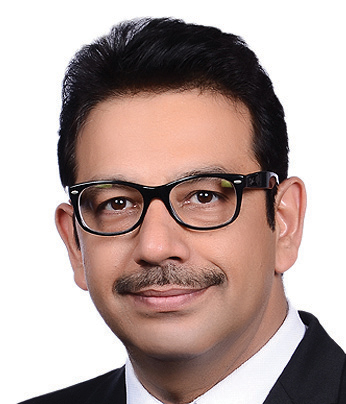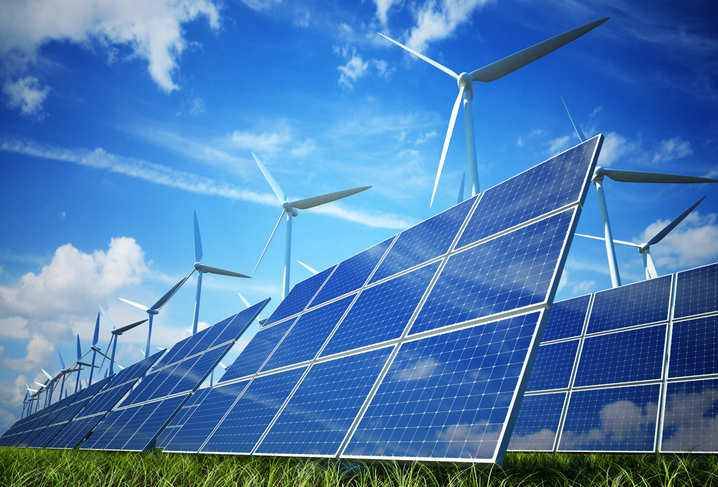
January 09
Wind power industry seeks extended incentives
The second phase of the generation-based incentive (GBI) scheme for wind energy, which was reintroduced in September 2013, is set to end on March 31. The industry has asked for a further extension in order to maintain the momentum of capacity expansion.
The Indian Renewable Energy Development Agency (IREDA), an arm of the Ministry of New and Renewable Energy (MNRE), recently undertook an evaluation of the GBI scheme through CRISIL, a ratings agency that also provides policy advisory services. CRISIL has submitted its final report on the issue, which was placed on the ministry’s website for suggestions from stakeholders.
The evaluation report establishes the advantages of promoting alternate business models, including repowering wind power plants and wind-solar hybrids; streamlining inter-state sale of power; having competitive bidding (the 1,000 MW Central Transmission Utility bid); increasing non-solar Renewable Purchase Obligation (RPO) compliance and using GBI to encourage distribution companies (DISCOMs) to procure wind power through Performance Based Incentives (PBI).
Generation-based incentive
GBI was first introduced in the 11th five-year plan on December 17, 2009, with the union cabinet approving the taking up of 4 GW. A GBI of INR 0.50 per kWh with a ceiling of INR 6.2 million (USD 91,000) per MW was provided to wind power projects at that time. The incentive was to be availed in not less than four years and a maximum of 10 years with an annual ceiling of INR 1.55 million per MW in the first 4 years.
IREDA was designated as the implementing agency for the scheme. It was extended for the 12th plan period that ends in March 2017 with an increased ceiling of INR 10 million per MW.
Under the GBI scheme, over 7 GW of capacity has been registered, according to an MNRE draft titled Evaluation of GBI Scheme for Wind Power Projects.
The industry is happy with the decision as long as the DISCOMs pay them on time, according to an official at MNRE who declined to be named. This is because, in case of a delay, say a year, the interest is more than GBI, he said. Also, if the Power Purchase Agreements (PPAs) are met, they are fine with it. The official added that a decision on continuing GBI would be taken before the Union Budget is presented in Parliament on February 1, but refused to divulge details.
Safeguarding the sector
Meanwhile, the industry is of the opinion that GBI should be extended so that the sector does not suffer.
“We are all for extending GBI, but only for the investors and not the utilities, since that will not be an incentive for the investor,” K. Kasthurirangaian, chairman of industry lobby group Indian Wind Power Association (IWPA), told indiaclimatedialogue.net. In the government’s target of achieving 60 GW of wind by 2022, more investment is required. For this to materialise, unless the investor finds it remunerative, he may not invest in the sector, the IWPA chairman reasoned.
“When it was first introduced, GBI was allocated for 15,000 MW. However, of this, it has been given only for 5,742 MW. Since the allotted target for GBI is yet to be met, it should be extended for another five years,” Kasthurirangaian said. “Also, there is a proposal that GBI should be given to the DISCOM. However even that will not help in reaching the target. GBI should therefore be extended to five years till 2022.”
V. Giri, Secretary General of the Indian Wind Turbine Manufacturers Association (IWTMA), another industry grouping, said that GBI should continue after 2017 until India reaches 60 GW of installed capacity and a review should be done after that. “Additionally, to make it revenue neutral, GBI should be allowed when Accelerated Depreciation (AD) is available,” Giri told indiaclimatedialogue.net.
Concurring, Sunil Jain, Chairman and managing director of Hero Future Energy, said, “The wind sector has just started on its growth path, so the withdrawal of GBI is likely to be a big dampener. Considering the short-term effects of demonetisation, leading to project delays, the government should extend it by at least three more months, so that investors and other stakeholders do not suffer.”
The Confederation of Indian Industry (CII) Representation on GBI Scheme, posted on December 15, 2016, states, “The CII National Committee on Renewable Energy believes that extending the GBI Scheme will be crucial to smoothen its transition from an investment-based incentive to an outcome-based incentive; to create a level playing field among various classes of investors; to broaden the investment base; to attract FDI/IPP (foreign direct investment / independent power producers) into the sector and to promote generation capacity, efficiency.”
Delay led to shortfall
The CRISIL report says, “Projects totalling 5,763 MW have been registered against the target of 15,000 MW by end of the 12th Five-Year Plan.” Jain says that since the announcement of GBI was delayed by a year, it led to this shortfall. On the other hand, Giri feels that since all IPPs register for GBI, there can be a time lag in the registration.
As of now, one of the biggest challenges which the wind sector is facing is the reluctance of DISCOMs to procure wind power due to their struggling finances and the difference between cost of wind generation and average power purchase cost, Giri explains. “For this, the IWTMA has suggested that back ended tariff help the DISCOM to pay a lower tariff than that declared by State Electricity Regulatory Commission (SERC) and have it compensated over a time period with escalation in tariff year on year. Also, the Renewable Energy Certificates (REC) market must be revitalised to enable the DISCOM to pay the average power purchase cost price and for REC certificates to be actively traded between floor price and the forbearance price.”
For the last three years, there has been reluctance on part of the states in buying wind power, especially Maharashtra, Rajasthan and now Madhya Pradesh, impacting the growth of this sector. In fact, this issue can be addressed by extension of GBI for a year, reasons Jain.
“There were other sectoral challenges, namely the pricing of wind power as compared to solar power. The cost of wind power projects must come down by 15% to compete with solar. With the introduction of competitive bidding in wind, it is likely to open new avenues of sale of wind to (non-wind states) and bring out the true pricing of wind power through price discovery. This may also address the pricing concerns of DISCOMs especially with regard to wind,” Jain told indiaclimatedialogue.net.
Procurement-based incentive
The CRISIL report suggests that the procurement-based incentive (PBI) should be applicable till 2019-20, with an incremental wind capacity target of 15 GW.
Welcoming the move, the IWTMA suggests that PBI should be made available till 2022 to help DISCOMs address their financial issues. The PBI, it adds, should be paid on three conditions. One, the payment must be made to the generator within 30 days of invoice. Second, there should be no backing down of power during high wind season. Third, the RPO obligation must be performed with the minimum of 90% and DISCOMs must not be allowed carry over.
Jain adds, “For implementing the mechanism, we should give time to DISCOMs. However, this should be on an incremental basis from the date of announcement. The caveat of this scheme with PBI should only be applicable on the amount DISCOMs paid on time. Otherwise, it will give rise to another case of good money chasing bad money.”
The CII in its letter to the MNRE states, “The pre-conditions for PBI, clearing pending invoices and monthly documentary evidence of timely payments to wind generators are difficult to administer, which can hamper its implementation.”
Current generation payments outstanding from Maharashtra, Tamil Nadu and Rajasthan are over six months overdue. To qualify for the PBI scheme, these states will first have to clear all pending dues, which are of significantly high value, and this will be an uphill task, especially for DISCOMs that are ailing financially.






